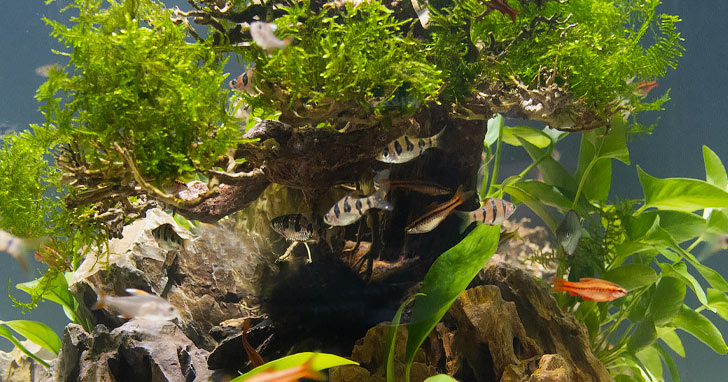
OXYGEN - the third most plentiful element on the planet Earth - and perhaps one of the most important. Nine-tenths of the mass of water is composed of oxygen, and all living things, with the exception of anaerobic organisms, require it to survive.
Yet, despite its importance, many aquarists take oxygen for granted. By better understanding the relationship between oxygen and aquaria, you can avoid many health and water quality problems in your setup down the road.
When Oxygen Meets Water Oxygen is introduced to water three different ways: through surface gas exchange with the atmosphere, via surface agitation from external aeration tools such as filters or aerators, and lastly, as a product of photosynthesis.
When you test your water's oxygen content, what you are actually testing is how much oxygen gas has been dissolved in the aqueous solution that is your water. If the dissolved oxygen concentration is too low, the water will try to gain oxygen via diffusion from the atmosphere. Likewise, if there is a higher concentration of dissolved oxygen present in the water, some dissolved oxygen will be diffused out and back into the atmosphere. For optimal oxygen content, freshwater should measure about 8.3 mg per liter of oxygen while saltwater should test out slightly lower, between 6.4 and 7.0 mg per liter of oxygen, when water is kept at 77°F.
How Oxygen is used in Water Maintaining an optimal dissolved oxygen concentration is key to healthy water and inhabitants. Fish use oxygen for respiration, and cannot survive if oxygen levels drop below 2 ppm. Plants, on the other hand, use oxygen to break down carbon dioxide during photosynthesis, although unlike fish, they give some of that oxygen back to the water.
Aerate to improve oxygen In addition to fish and plants, numerous organisms consume dissolved oxygen in water. Nitrifying bacteria, for example, use oxygen when feeding on organic waste products, which is why overstocking of a water system is often a contributing factor to poor water quality and inhabitant health: with all of the bacteria using oxygen to break down the added waste, there simply isn't enough oxygen to nourish fish and plants.
Improve Oxygen Levels You can do numerous things to increase oxygen levels in your setup's water if you notice problems, such as fish gasping at the surface or foul odors. Something as simple as a water change introduces fresh, oxygen-laden water into your setup while reducing oxygen-depleted wastewater. Regularly cleaning filter systems will help improve water flow and maintain a balanced population of beneficial bacteria needed to break down ammonia and nitrite, without directly competing with fish for vital oxygen. Increasing the amount of plants in your setup will add oxygen-creating flora to your ecosystem. Furthermore, regularly test using an oxygen test kit to determine if additional aeration, in the form of filters or aerators, is needed. Lastly, monitor water temperature to avoid overheated water, since warm water holds less oxygen than cooler water, putting additional stress on aquatic systems.
|